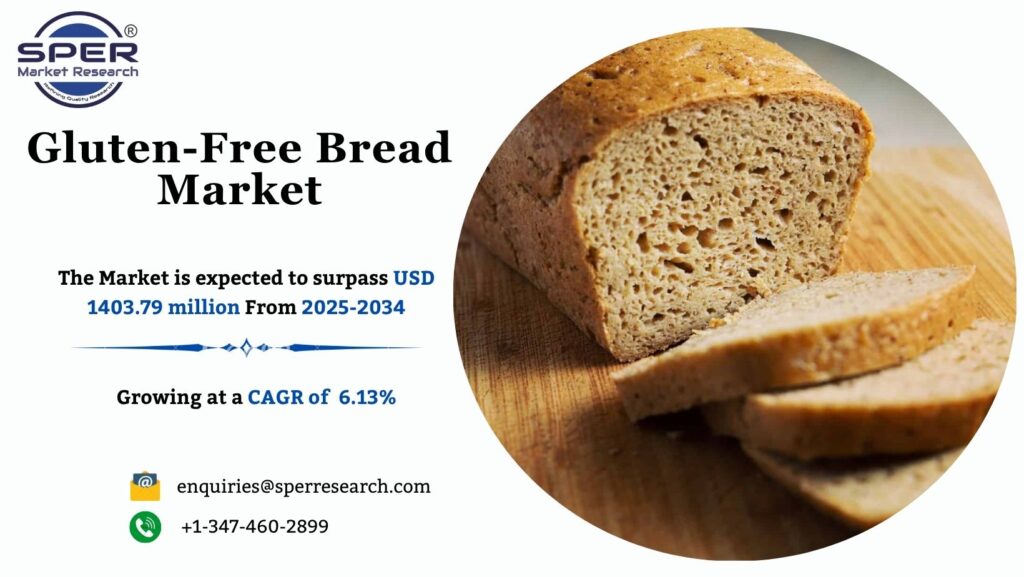Bread made without gluten, a protein found in wheat, barley, and rye, is referred to as gluten-free bread. Its formulation is designed for persons who have gluten sensitivity, coeliac disease, or choose to eliminate gluten due to dietary restrictions. To mimic the texture and elasticity that gluten normally offers, gluten-free bread is commonly manufactured using a combination of alternative flours, such as rice, maize, potato, tapioca, or almond flour, in place of standard flours. Binders, such as xanthan gum, are often included.
According to SPER market research, ‘Global Gluten-Free Bread Market Size- By Distribution Channel – Regional Outlook, Competitive Strategies and Segment Forecast to 2034’ state that the Global Gluten-Free Bread Market is predicted to reach 1403.79 million by 2034 with a CAGR of 6.13%.
Drivers:
The market for gluten-free bread is currently experiencing notable growth, propelled by a rising consumer demand for healthier and allergen-free food choices. The increasing incidence of gluten intolerance, coupled with celiac disease and lifestyle-driven dietary changes favoring gluten-free options, has contributed to the expansion of this market. Manufacturers are responding by innovating in areas related to taste, texture, and nutritional content, utilizing alternative flours such as almonds, rice, and quinoa. Furthermore, market penetration is increased by the increasing availability of gluten-free bread through traditional retail channels, such as supermarkets, online retailers, and speciality stores.
Request a Free Sample Report: https://www.sperresearch.com/report-store/gluten-free-bread-market?sample=1
Restraints:
The high cost of gluten-free bread is primarily due to the use of alternative flours, including but not limited to rice and tapioca. This contributes to elevated production expenses that consequently lead to higher retail prices. Gluten-free bread tends to attract individuals who are health-conscious as well as those diagnosed with celiac disease or experiencing gluten sensitivity, which narrows the potential customer base. Furthermore, gluten-free bread utilizes ingredients that simulate those in traditional bread, which may result in a reduced shelf life and an increased likelihood of staleness. Given the rising awareness of health issues, the demand for gluten-free bread is on the rise, thereby creating intense competition within the market. This competition results in greater product differentiation among market players, who seek to establish their presence and cultivate consumer trust. The global market for gluten-free bread in 2024 was dominated by the North America, which generated the highest revenue. A significant contributing element is the rising health consciousness of customers, who are increasingly selecting gluten-free products because of the alleged health benefits, which include improved digestive health and the treatment of diseases like coeliac disease. Moreover, the increased awareness of gluten sensitivity and celiac disease, fueled by media coverage and health professionals, has further stimulated demand, along with lifestyle choices that incorporate gluten-free diets as part of broader wellness strategies. Some of the key market players are Dawn Food Products, The Hain Celestial Group, General Mills Inc, Amy’s Kitchen Inc, Bob’s Red Mill Natural Foods, Inc, and others.
For More Information, refer to below link: –
Gluten-Free Bread Market Share
Related Reports:
Hot Runner Systems Market Growth
Follow Us –
LinkedIn | Instagram | Facebook | Twitter
Contact Us:
Sara Lopes, Business Consultant — USA
SPER Market Research
enquiries@sperresearch.com
+1–347–460–2899



